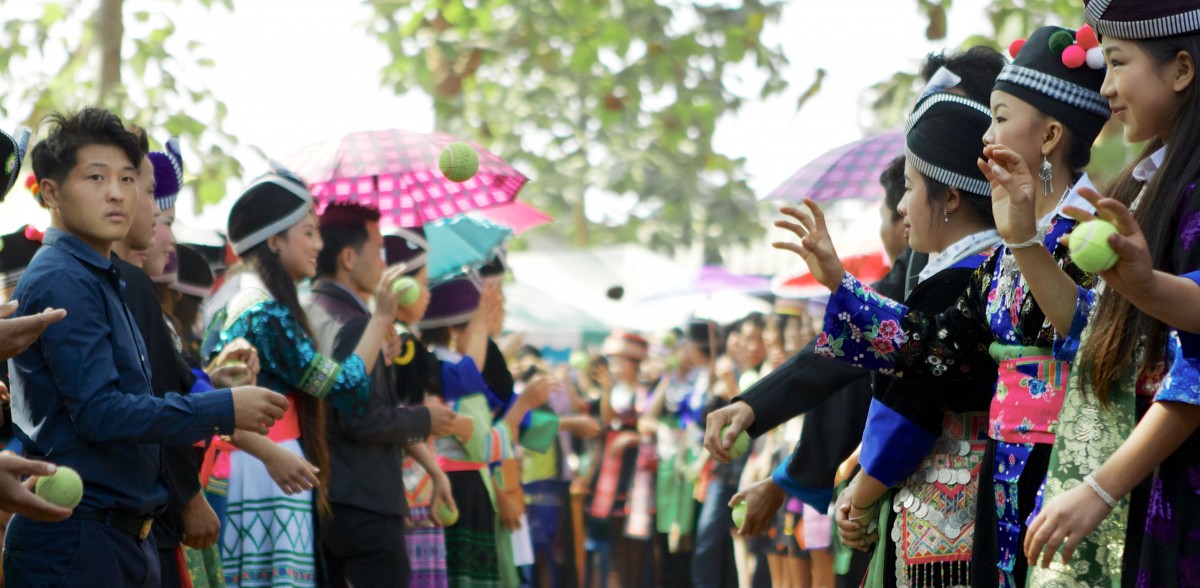Chinese New Year celebrations are a well-known tradition in Southeast Asia, but how much do you know about Hmong New Year?
The Hmong are a minority ethnic group who mainly live in China, Vietnam, Laos and Thailand. They are thought to originate from the Yellow River basin in Central China, however they are racially separate and therefore have a different culture from their countrymen.
Although the Hmong have been gradually migrating south into Indochina for the past 300 years, China is still home to the largest population of Hmong people, roughly 2.7 million. An additional 1.2 million Hmong are spread out over Vietnam, Laos, Thailand and parts of Myanmar.
Outside of Asia, the largest population of Hmong live in the US – almost 170,000 of them.
Hmong New Year
Hmong New Year celebrations traditionally last 10 days. In the modern city though, this has been shortened to three days due to the busy routine of a 5-day work week.
In the Hmong lunar calendar, the 12 months have exactly 30 days each, thus celebrations begin on New Year’s Eve, the 30th day of the 12th month. That falls between late November and late December in the Western calendar.

The New Year marks the end of the harvest season, when farmers can finally rest and enjoy the fruits of their labour. It’s a time for thanksgiving, paying respects to gods and ancestors, welcoming new beginnings and praying for a prosperous year ahead.
People dress in their finest traditional attire. Hmong women of all ages wear brightly coloured and intricately designed clothing. Every Hmong community blends regional influences with traditional ones to make the garments unique.
The Hmong continue to celebrate their New Year with traditions, rituals and feasts which vary from region to region and even from household to household. These include:
Hu Plig – ‘Soul Calling’, a ritual performed by either a shaman or the head of a household to call back the spirits of ancestors.
Txi Xwm Kab — Paying respects to the God of Wealth. A new altar or shrine is set up and offerings are given in hopes of a prosperous year.
Noj peb caug – Literally ‘Eat 30’, the main New Year feast.
Pe Tsiab – Paying respects to elders by kneeling and asking for their blessing.
Other activities include song contests, musical performances, top spinning and bullfighting, where two bulls are pitted against each other to see which one retreats first.
Pov Pob
Perhaps the most well-known activity is a ball game called pov pob. Hmong teenagers, girls and boys, form two lines facing each other and throw a ball back and forth.
Girls can throw the ball to boys and girls, but boys can only throw the ball to girls. It is frowned upon to throw the ball to someone in the same clan – for reasons that soon become apparent.
Once the ball is dropped a trinket or decoration is given to the person who threw the ball and can only be recovered by singing a love song or hais kwv txhiaj to that person.
The game acts as an introductory courting ritual, allowing younger Hmong get to meet and form relationships that might lead to marriage. It also serves as a practical way for a historically marginalised minority people to ensure their culture and ethnicity carries on for future generations.
Keeping the Culture Alive
While the Hmong New Year serves many purposes, perhaps the most important is its preservation of their cultural identity, especially for the Hmong diaspora.
St. Paul, Minnesota, is home to the second largest Hmong population in the US with a community numbering over 66,000. This year marks their 40th annual Hmong New Year celebration.

In California, where the largest US Hmong community of 90,000 resides, they will also be celebrating New Year with performances and festivities, making it the largest Hmong–American community event in the world.
Regardless of where you call home, we wish all our readers a very happy Hmong New Year with good health and good fortune. Nyob zoo xyoo tshiab!
Source : Discovery Dcode



















